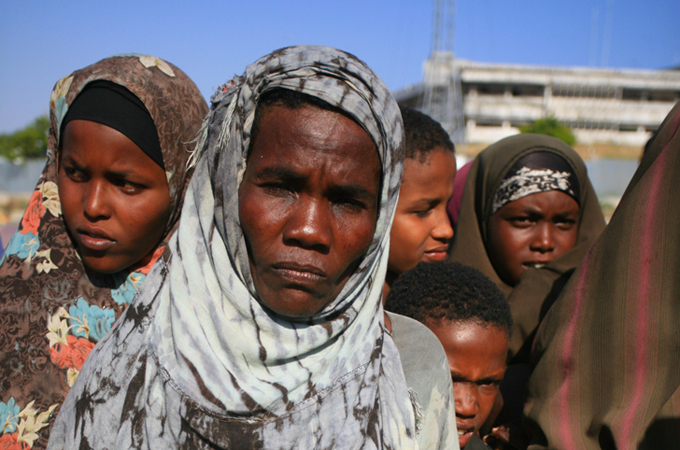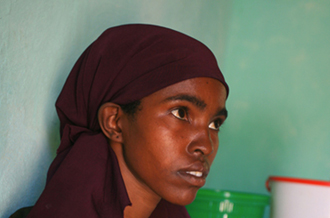Somalia: Hunger and homelessness
As displaced Somalis flee conflict and starvation, the crisis in Mogadishu continues to deepen.

 |
| The countless displaced Somalis in refugee camps have nowhere to return [Andrew Wander/Al Jazeera] |
Mogadishu, Somalia – The mounds that mark the roadside graves of Mogadishu’s children are so small, you’d miss them if they weren’t pointed out. They lie on the edges of ragged camps that have sprung up all over this shattered city, which has become a home to hundreds of thousands of desperate Somalis seeking to escape the drought and conflict that plunged them into the worst hunger crisis seen here for two decades.
In Mogadishu, escape is a relative term. The city has become the epicentre of the world’s worst humanitarian crisis. While new arrivals say that conditions in the capital are better than elsewhere in the country, they are atrocious by any other measure.
Malnutrition rates are more than double the emergency threshold and the borders of the camps are lined with human excrement. Some of the displaced huddle into makeshift tents held together with string, while others eke out an existence amongst the shells of buildings ruined by decades of war.
Aid agencies can operate here, but the security situation is a constant concern; visits to the camps are punctuated by gunfire. Meanwhile the endless stream of new arrivals means that the scale of the problem is growing faster than the resources required to meet it.
In Sigale camp, one of the largest of the new settlements, the Save the Children health centre is packed with mothers and young children waiting to be seen by the staff. The children are receiving treatment for malnutrition, and many of them are less emaciated than when they arrived. But there is always the next wave of newcomers who held out as long as they could before abandoning their homes and making a last desperate journey to Mogadishu.
The people here have been hungry for months. One woman holds her paltry daily rice ration on a plate little larger than a tea saucer. “Is this enough?” she asks, bitterly. The answer is written all over her gaunt features and stick-like limbs: The people here are barely surviving.
Mother of six, Ruqiya Muhammed, is one of those who have made the journey and is now living with her family in Sigale.
 |
| Ruqiya Muhammed and her family gave up their home when there was nothing left [Andrew Wander/Al Jazeera] |
“It is much better here compared to what we went through in my village,” she says. “One by one, our goats died. Then the seeds we planted did not grow. We gave up when everything was dead. There was nothing left.”
Ruqiya and her children will not be going home anytime soon. “I cannot go back,” she says. “There is no way of surviving there anymore. This is not my home, even my neighbours are foreigners to me. It pulls my heart to be here.”
Looking out over the sprawling camps, which stretch almost as far as can be seen, it is clear that homelessness, not hunger, may be the enduring legacy of last year’s deadly drought. The UN estimates 184,000 people have moved into Mogadishu over the past six months, but aid workers in the camps believe the true figure could be far higher than that.
The displaced are here to stay, at least for the foreseeable future.
Like the tens of thousands of Somalis who arrived in Dadaab, the sprawling refugee camp just over the border in Kenya, returning to homes ravaged by drought and conflict is unthinkable under the current conditions.
Ignored warnings
It didn’t have to be this way.
Early warnings were predicting food crisis in Somalia as early as August 2010, but for months appeals for funding by the few aid agencies working in the country fell on deaf ears. It was not until July 2011, when media reports revealed the scale of the crisis to the world that significant humanitarian funding became available. By this time malnutrition rates had exploded in some parts of the country, and child-size graves were already being dug across the region.
Two of the largest aid agencies, Save the Children and Oxfam, say that the delay cost thousands of lives as well as millions of dollars in extra aid money required to tackle a crisis that had spiralled out of control by the time funding became available.
The two agencies are calling for the system that releases funding for emergency responses to be reformed. “We can no longer allow this grotesque situation to continue; where the world knows an emergency is coming but ignores it until confronted with TV pictures of desperately malnourished children,” says Justin Forsyth, Save the Children’s chief executive. “The warning signs were clear and with more money when it really mattered, the suffering of thousands of children would have been avoided.”
For residents of Mogadishu’s refugee camps, none of this really matters. They are too busy in the daily struggle for survival to wonder what might have been, and their uncertain future is of greater concern than the mistakes of the past.
“I will return to my home when I know I can feed my children” says Ruqiya, as she sits in a medical office with her 10 month-old daughter, Hawa. “But I don’t know when that will be.”
Sadly for Ruqiya, and the thousands of others crammed into this broken city, neither does anyone else.
Follow Andrew Wander on Twitter: @andrewwander